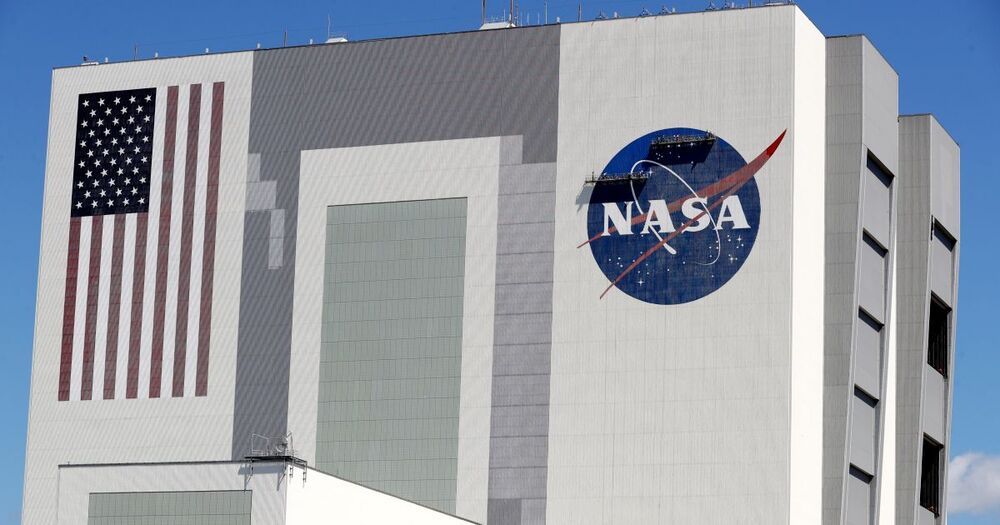After 50 years of searching, neuroscientists have found what could be called “grandmother neurons,” they are reporting.



After Sir Richard Branson’s spaceflight this weekend, the leader of Russia’s main space corporation, Roscosmos, offered some kind words about the achievement on Twitter. Dmitry Rogozin called the flight a “landmark” in terms of technology development and expanding the number of humans able to see Earth from space.
Then Rogozin went a step further, lamenting the fact that Russia’s “billionaire oligarchs” spend their money on yachts and vanity projects rather than the development of space technology and increasing humanity’s knowledge of space.
This is a notable comment from Rogozin, who in the past has been critical of one particular billionaire spending his money developing space technology: SpaceX founder Elon Musk. Among other remarks, Rogozin has said that NASA should not get too cocky about its newfound access to space in case SpaceX’s Crew Dragon vehicle “breaks.” He has also said that SpaceX is “gentle” for getting to work in the balmy conditions of South Texas, while Russian engineers and technicians work in the depths of Siberia during the winter.

The U.S. military says it is months away from launching clinical trials of a pill designed to block or reduce many degenerative effects of aging—an oral treatment that a leading researcher in the field says is better than nothing while questioning how effective it will ultimately prove.
U.S. Special Operations Command (SOCOM)—which develops and employs Special Operations Forces worldwide to advance U.S. policies and objectives—has “completed preclinical safety and dosing studies in anticipation of follow-on performance testing” of a first-in-class nicotinamide adenine dinucleotide, oxidized state (NAD+) enhancer, a small molecule drug being developed by Metro International Biotech (MetroBiotech), Navy Cmdr. Timothy A. Hawkins, a spokesperson for SOCOM, told GEN.
SOCOM and MetroBiotech are set to start clinical trials during the 2022 federal fiscal year, which starts October 1.




Amazon acquires Facebook’s Satellite Internet team!
Project Kuiper going strong to compete SpaceX’s StarLink, OneWeb and Telesat.
The deal bolsters Amazon’s $10 billion effort to develop low Earth orbit (LEO) satellites capable of delivering high-speed broadband internet around the globe, while marking the end of Facebook’s ultimately unsuccessful efforts to do the same.
Facebook’s team, which joined Amazon’s existing 500-person operation in April, included physicists as well as hardware and software engineers who have experience working on aeronautical and wireless systems, according to The Information.
The talent acquisition deal included some intellectual property developed by the team, as well as equipment and facilities, Facebook told Insider. Other terms were not disclosed.

Summary: Infant boys with a gut bacterial composition high in Bacteroidetes were found to have more advanced cognitive and language skills one year later compared to boys with lower levels of the bacteria.
Source: University of Alberta.
The University of Alberta-led research followed more than 400 infants from the CHILD Cohort Study (CHILD) at its Edmonton site. Boys with a gut bacterial composition that was high in the bacteria Bacteroidetes at one year of age were found to have more advanced cognition and language skills one year later. The finding was specific to male children.

The team plans to keep studying whether vaccines could help alleviate IBD symptoms, which tend to stay dormant then flare up. They also hope to find similar ways to nudge a dysfunctional gut microbiome back into balance.
The connection between gut bacteria and our overall health has been well studied in recent years. And while many of the specifics of this relationship are still unknown, it’s clear that a balanced microbiome with the right mix of bacteria helps maintain many of our regular bodily functions; conversely, the wrong mix of bacteria might help cause or signal the emergence of illness. But bacteria are only one type of microbe, and there’s been less work studying the many viruses and fungi that inhabit our body.
This new research was conducted by scientists from the University of Utah Health, who were curious if fungi were relevant to the development of inflammatory bowel disease (IBD), which includes Crohn’s. IBD is a complicated disorder, thought to have several contributing factors, including genetics. But recent research has suggested that certain species of fungi and yeast (the single celled version of fungi) could be one of these risk factors, including a common fungi in our gut called Candida albicans.
In experiments with mice, the team noticed that a functioning immune system seemed to interact with C. albicans. The yeast has the uncanny ability to switch between different forms of growth. It can remain a ball-like single-celled organism, or it can turn into a multicellular form, decked out with hyphae, a common branch-like structure found in most other fungi, that allows it to invade the tissues of our body to keep growing. The team found evidence that antibodies specific to C. albicans didn’t outright try to kill it—instead, they kept the yeast from turning into this more invasive form. But once the yeast was allowed to grow unfettered, the mice became sick with IBD-like symptoms, which can include diarrhea, intense cramps, and weight loss.

“You can also engineer dead zones in radio waves or silent zones in acoustic waves,” said Lim. “This research points to the possibility of designing complex topologies in wave physics beyond optics, from electron beams to acoustics.”
When we think about singularities, we tend to think of massive black holes in faraway galaxies or a distant future with runaway AI, but singularities are all around us. Singularities are simply a place where certain parameters are undefined. The North and South Pole, for example, are what’s known as coordinate singularities because they don’t have a defined longitude.
Optical singularities typically occur when the phase of light with a specific wavelength, or color, is undefined. These regions appear completely dark. Today, some optical singularities, including optical vortices, are being explored for use in optical communications and particle manipulation but scientists are just beginning to understand the potential of these systems. The question remains — can we harness darkness like we harnessed light to build powerful, new technologies?
Now, researchers from the Harvard John A. Paulson School of Engineering and Applied Sciences (SEAS) have developed a new way to control and shape optical singularities. The technique can be used to engineer singularities of many shapes, far beyond simple curved or straight lines. To demonstrate their technique, the researchers created a singularity sheet in the shape of a heart.